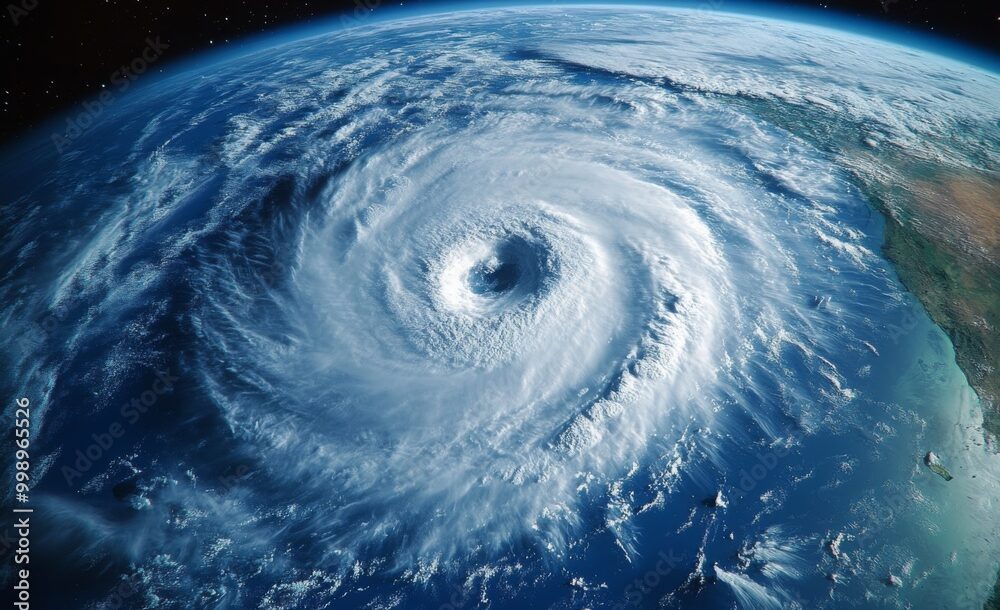Hurricane Helene bears out predictions of growing storm threat

The hurricane watchers who have been predicting more frequent and more powerful storms aren’t exactly celebrating in the wake of Hurricane Helene’s devastating destruction and death in Florida, Georgia, and the Carolinas. But their prognostications certainly seem to be coming to fruition.
Unusually warm Gulf waters that fuel tropical storms brought record levels of wind and rainfall to the areas over the last weekend in September. Helene was the first known Category 4 storm to hit Florida’s Big Bend region since records began in 1851, bringing up to 30 inches of rain in some areas, with winds up to 140 miles an hour.
Predicted or not, officials said readying for a storm the magnitude of Helene was futile.
"I don't know that anybody could be fully prepared for the amount of flooding and landslides that they are experiencing right now," said FEMA Administrator Deanne Criswell.
Property damage estimates vary widely
Property damage estimates vary widely as information is still being compiled and assessed. Analysts at Moody’s Analytics placed the total property damage at between $15 billion and $26 billion. Moody’s said its estimate is higher than that of Hurricane Idalia’s but below storms from earlier years like Ian and Ida, which hit more populated areas in Florida and Louisiana, and places with more expensive homes.
AccuWeather's preliminary estimate of the total damage and economic loss from Helene in the U.S. is between $95 billion and $110 billion. The estimate includes damage to homes, businesses, roads, vehicles, and the effects of power outages, along with lost wages, flight delays, damage to the supply chain and more, AccuWeather said in a release.
Other catastrophic storms include Hurricane Ian in 2022, which caused about $180 to $210 billion in damage; Hurricanes Harvey and Irma in 2017 with a combined total of about $270 billion; Hurricane Sandy in 2012 with $210 billion; and Hurricane Katrina in 2005 with damages of about $320 billion. Some estimates said Helene’s insured damage tally could match or break records for an entire hurricane season.
Helene is the eighth named tropical storm of the 2024 season, which began in June, and those predictors say there’s a lot more to come.
Forecasts include 4 to 7 major hurricanes
The National Oceanic and Atmospheric Administration’s (NOAA) 2024 Atlantic Hurricane Season forecast predicted an above-normal hurricane season this year with a range of 17-25 total named storms. Of those, 8 to 13 are forecast to become hurricanes, including 4 to 7 major hurricanes (category 3,4, or 5).
AccuWeather meteorologists are forecasting 20-25 named storms across the Atlantic basin, including 8-12 hurricanes, four to seven major hurricanes and four to six direct US impacts.
“Unfortunately, it looks like predictions of stronger than normal storms are coming true, and this coincides with significant population growth in areas at high risk of hurricanes and other major weather events,” said Ethan Aumann, senior director or environmental Issues and resiliency at The American Property Casualty Insurance Association. “The combination results in more severe damages and greater financial losses.”
Helene may cause insurers' re-evaluation
Helene is more than likely to cause insurers to re-evaluate coverage conditions, costs, and availability, experts said, if they haven’t already.
“Climate change is impacting hurricanes through warmer ocean temperatures that causes rapid hurricane intensification, warmer air temperatures that can lead to heavier precipitation, and greater storm surge from rising sea levels,” Aumann said. “These factors, when combined with increasing exposures from demographic shifts in coastal states, make hurricanes more destructive and costly.”
The death toll from Helene was approximately 100 two days after the most intensive periods of the storm. But FEMA officials said more than 600 people are still missing.
President Biden has issued emergency declarations for Alabama, Florida, Georgia, North Carolina, South Carolina, Tennessee, and Virginia, all of which free up federal resources that will go toward recovery and assistance efforts. More than 800 FEMA personnel have been deployed to the region to assist in the response, the White House said.
© Entire contents copyright 2024 by InsuranceNewsNet.com Inc. All rights reserved. No part of this article may be reprinted without the expressed written consent from InsuranceNewsNet.com.
Doug Bailey is a journalist and freelance writer who lives outside of Boston. He can be reached at [email protected].





Indexing the market: Driving life, annuity sales
How state regulation keeps insurance innovating safely
Advisor News
- Global economic growth will moderate as the labor force shrinks
- Estate planning during the great wealth transfer
- Main Street families need trusted financial guidance to navigate the new Trump Accounts
- Are the holidays a good time to have a long-term care conversation?
- Gen X unsure whether they can catch up with retirement saving
More Advisor NewsAnnuity News
- Pension buy-in sales up, PRT sales down in mixed Q3, LIMRA reports
- Life insurance and annuities: Reassuring ‘tired’ clients in 2026
- Insurance Compact warns NAIC some annuity designs ‘quite complicated’
- MONTGOMERY COUNTY MAN SENTENCED TO FEDERAL PRISON FOR DEFRAUDING ELDERLY VICTIMS OF HUNDREDS OF THOUSANDS OF DOLLARS
- New York Life continues to close in on Athene; annuity sales up 50%
More Annuity NewsHealth/Employee Benefits News
Life Insurance News
- AM Best Affirms Credit Ratings of Manulife Financial Corporation and Its Subsidiaries
- AM Best Upgrades Credit Ratings of Starr International Insurance (Thailand) Public Company Limited
- PROMOTING INNOVATION WHILE GUARDING AGAINST FINANCIAL STABILITY RISKS SPEECH BY RANDY KROSZNER
- Life insurance and annuities: Reassuring ‘tired’ clients in 2026
- Reliance Standard Life Insurance Company Trademark Application for “RELIANCEMATRIX” Filed: Reliance Standard Life Insurance Company
More Life Insurance News